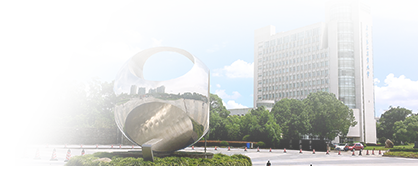Recently, Wang Xin, a young teacher of CAMS & PUMC, has published a series of articles in the world-renowned journal Small (JCR Zone 1, Chinese Academy of Sciences Zone 2 Top). If = 12.1) Co-authored and published a research paper entitled Regulation of Octahral Districts and Interlayer Spacing in 2D Perovskite Capping LayerToward Efficiency and Stable Solar Cells, Dr. Wang Xin of the Institute of Aeronautics and Astronautics, Prof. Sun Xiangnan and Prof. Zhao Xiaoming of Nanjing University of Aeronautics and Astronautics are co-corresponding authors.
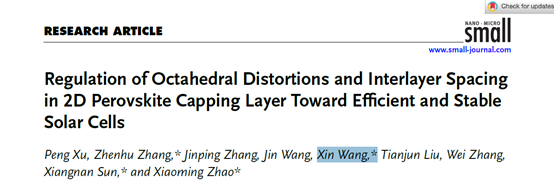
Brief Introduction:
Two-dimensional perovskites as interfacial modifiers have shown potential to enhance the stability of perovskite solar cells (pscs); however, Two-dimensional structures built based on flexible long-chain cations typically result in a high degree of octahedral distortion and larger layer spacing. These factors can hinder efficient charge extraction between the perovskite and the charge transport layer and affect the stability of 2D / 3D devices. In this study, imidazole spacers with rigid ring structure were used as interfacial modifier. Spacers of different molecular rigidities will influence their anisotropic orientation to the octahedron of the [pbi ₆] ⁴ ⁻ ⁻ ⁻ ⁻ ⁻ ⁻, thereby reducing the crystal distortion, The appropriate octahedral layer spacing is maintained; a property that contributes to efficient hole extraction from bulk perovskite to surface layer and enhances the structural stability of 2-D perovskites. The results show that in the optimized 2D / 3D PSCs, the power conversion efficiency of the 0.16 cm ² small area cell is 26%, and that of the 38.9 cm ² solar module is 22.4%. In addition, such spacers can improve the phase stability of the 3-D perovskite and effectively mitigate the phase degradation problem; after 2000 hours of continuous operation at 40 ° C under one standard solar illumination, the device can still maintain 98% of its initial efficiency. These results indicate that imidazole-based interfacial modifiers have potential applications in the preparation of highly efficient and stable 2D / 3D PSCs.
Link to the article: Https: / / doi.org / 10.1002 / smll.202508224
In-depth reading:
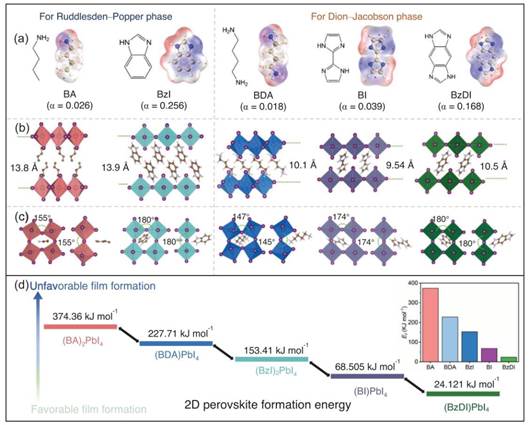
Fig. 1.a) Electrostatic potential diagram and force constants of n-butylamine (BA), benzimidazole (BzI), 1,4-butanediamine (BDA), biimidazole (BI) and benzodiimidazole (BzDI); B) the crystal structure observed along the out-of-plane direction (perpendicular to the stacking axis); c) the in-plane and out-of-plane distortion of two-dimensional perovskites; d) the difference in relative formation energy between different two-dimensional perovskites (n = 1).
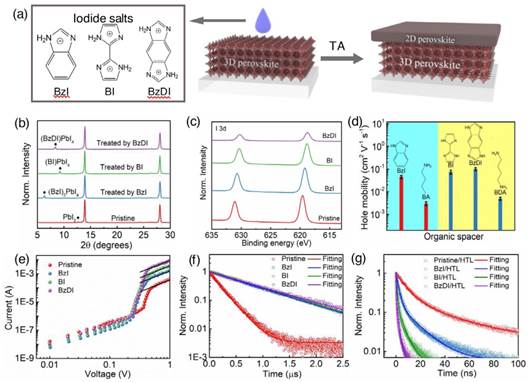
Fig. 2.a) a schematic diagram of the preparation of two-dimensional / three-dimensional (2D / 3D) perovskite using imidazole-based spacers; X-ray diffraction (XRD) patterns of the original perovskite film and the surface-treated perovskite film excited from the film side; c) X-ray photoelectron spectroscopy (XPS) I 3d patterns of the above two films; D) out-of-plane hole mobility of two-dimensional perovskite based on different spacers, e) dark state current-voltage (I-V) curve of hole-only devices; F) Time-resolved photoluminescence (TRPL) transient curves of the original perovskite film and the perovskite film covered with different two-dimensional perovskite layers; G) TRPL curve of perovskite / two-dimensional cladding / hole transport layer (HTL) stack structure.
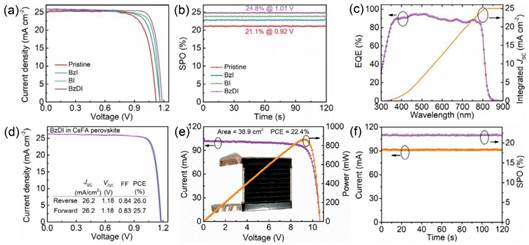
Fig. 3.a) Current-voltage (J-V) characteristics of optimal perovskite solar cells (PSCs) without covering a two-dimensional perovskite layer and covering different two-dimensional perovskite layers; B) the stable power output of the above optimal PSCs; c) the external quantum efficiency (EQE) of the optimal PSCs based on benzodiimidazole (BzDI); D) Current-voltage (J-V) characteristic output of optimal PSCs of cesium rubidium formamidine (CsFA) group covering the BzDI layer; E) Current-voltage (I-V) characteristics of an optimal perovskite component based on BzDI with an effective area of 38.9 cm ² (inset: Photograph of the optimal component); F) Stable power output and stable photocurrent output of an optimal perovskite solar module based on BzDI.
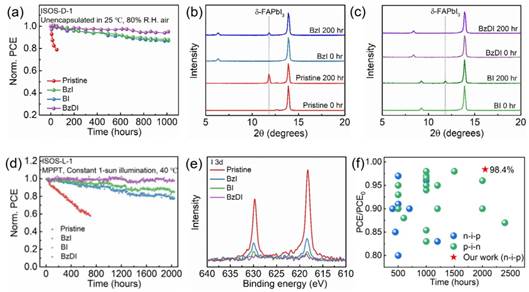
Fig. 4.a) Unencapsulated perovskite solar cells (PSCs) in air at 25.d egree. C. and 80% relative humidity (R.H.), Normalized power conversion efficiency (PCE) versus aging time; B) and c) the original perovskite film, the perovskite film based on benzimidazole (bzi), biimidazole (bi) and benzodiimidazole (bzdi) at 25 c, X-ray diffraction (XRD) patterns of 80% relative humidity before and after storage for 200 h; D) encapsulated perovskite solar cells (PSCs) in air at 40 ℃ under constant 1 solar illumination and maximum power point tracking (MPP) conditions, Normalized power conversion efficiency (PCE) versus aging time; E) X-ray photoelectron spectroscopy (XPS) I 3d spectra of the surface of hole transport layer (HTL) in aged perovskite solar cells (PSCs); F) Comparison of the operational stability of highly efficient (power conversion efficiency PCE > 25%) perovskite solar cells (PSCs) reported in the literature.
